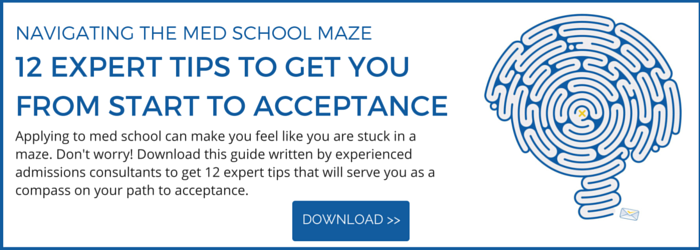
Some applicants may apply to DO programs as a backup, considering them as “safety schools,” but this strategy will often backfire. Osteopathic schools are looking for applicants with an awareness of and a commitment to osteopathic principles.
Show Your Interest in Osteopathy
To demonstrate this commitment, you need to show your awareness of the unique osteopathic therapeutic approaches. You will also want to convey why you want to care for patients using osteopathic modalities. If you do not have a well-designed and convincing reason for applying, your application will likely be rejected.
In your application, you should be sure to:
- Share your excitement about unique aspects of osteopathic training
- Discuss osteopathic modalities in your application
- Convey what a “holistic” approach to patients involves
- Show your personal fit for osteopathy
- Get a letter of recommendation from a DO (required for most DO programs)
You don’t need to settle on just one type of program! For some applicants, applying to both MD and DO programs will be the right choice.
You should consider going this route if:
- You are genuinely interested in both MD and DO training, and think you have a chance at getting accepted to either type of program.
- You want to learn more about each program and feel you can make a more informed decision by going through the application and interview process.
- There are DO and MD programs in your geographic area and you have a strong reason for wanting to stay in the region.
- You really want to be a clinician – preferably in primary care – and don’t have a strong preference in terms of approach, but are open minded to both.
Then again, you may also want to consider the following drawbacks:
- DO schools require a separate application (AACOMAS), so applying to both can double your time, work, and cost. It may even results in a lower quality of your applications, if you are unable to spend enough time and energy on each secondary application.
- The personal statement for osteopathic schools has a different character count and needs to have a different emphasis. If you simply make cuts to your AMCAS essay and submit it to AACOMAS, it will not be as convincing as if you were to take the time to approach it separately and wisely.
- The average GPA of students accepted to DO schools increases every year and some DO schools have lower overall acceptance rates than allopathic schools.
- Most DO schools expect you to shadow and get a letter of recommendation from a practicing DO. These can be hard to obtain, so start looking at least a year before you are planning to apply.
- If you are lucky enough to be accepted to a DO school early in the cycle, you need to put a deposit down to save your place. If you eventually get into and decide to attend an allopathic school, you could end up losing your deposit.
Work one-on-one with an expert medical school admissions consultant with decades of experience guiding applicants to acceptance at top medical schools! You’ll learn how to identify your competitive advantage, and use it to get accepted. Explore our Medical School Admissions Consulting services, work with your consultant to choose the best med programs to apply to, and then confidently submit a stellar app that will get you ACCEPTED!
Suzi Schweikert is a former UCSD School of Medicine adcom member who has mentored students in healthcare programs for over 20 years. She has a BA in English Lit from UCLA, an MD from UCSD, and an MPH from SDSU. Want Suzi to help you get Accepted? Click here to get in touch!
Related Resources:
• The Quick Guide to Acing Your AACOMAS Application, a free guide
• Ace the AMCAS Essay, a free guide
• Medical School Selectivity Index: Where Are You a Competitive Applicant?
• Ace the AMCAS Essay, a free guide
• Medical School Selectivity Index: Where Are You a Competitive Applicant?
This article was originally posted on blog.accepted.com.
Applying to medical school? The talented folks at Accepted have helped hundreds of applicants like you get accepted to their dream programs. Whether you are figuring out where apply, working on your AMCAS application, working on secondary essays, or prepping for your interviews, we are just a call (or click) away. Contact us, and get matched up with the consultant who will help you get accepted!
